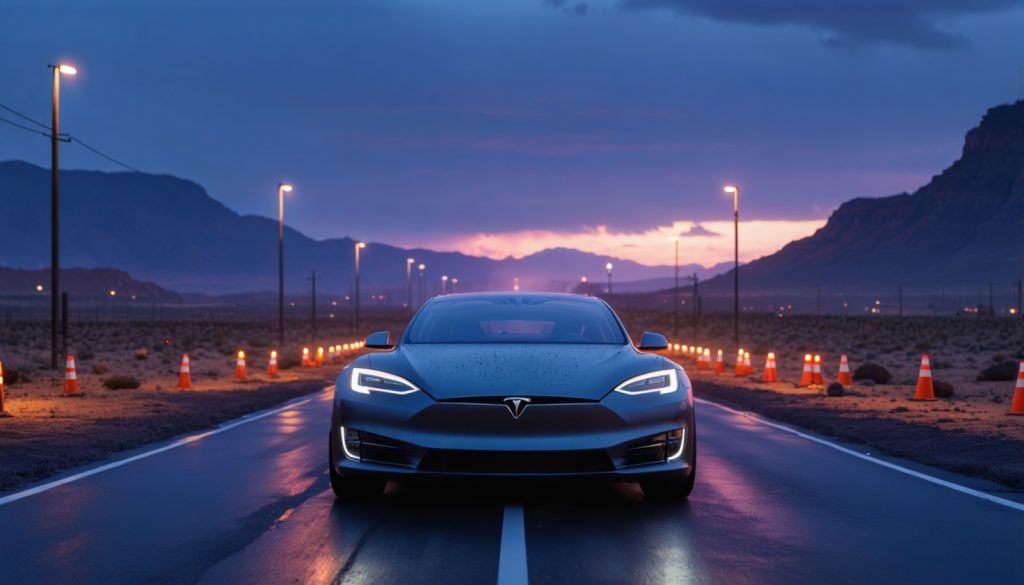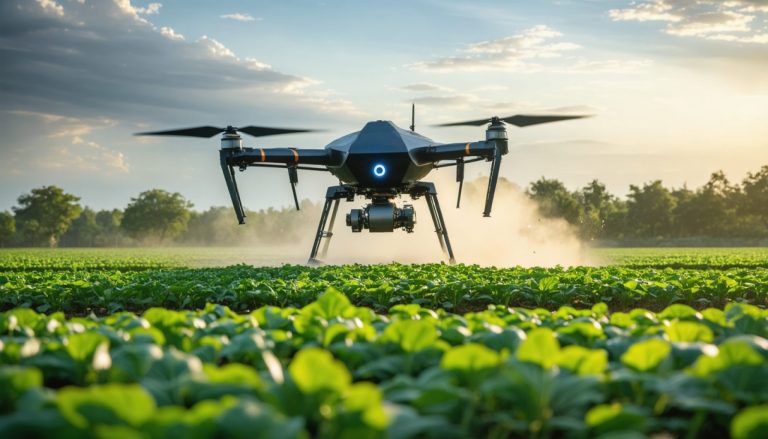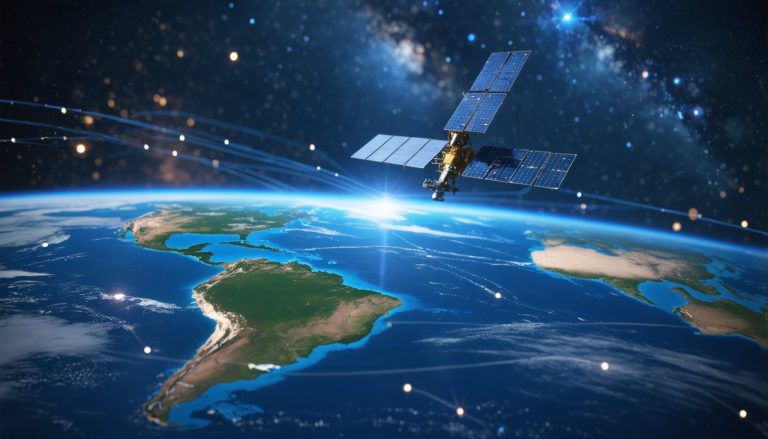
- Tesla revolutionized the electric vehicle (EV) industry, driving the global shift towards sustainable energy.
- Founded in 2003, Tesla’s sleek, efficient car designs accelerated the EV market’s growth.
- Elon Musk envisions a future of energy independence, exemplified by products like the Powerwall.
- Tesla’s innovations extend beyond vehicles, encompassing projects with SpaceX and autonomous driving technologies.
- The Gigafactory aims to lower battery costs and bolster worldwide EV adoption.
- The Tesla Roadster exemplifies speed and sustainability in an aerodynamically optimized design.
- Tesla continuously pushes boundaries, encouraging a greener and more innovative future.
Amidst the whirlwind of technological advancements, Tesla stands as a beacon of innovation, capturing the global imagination with its sleek designs and audacious goals. Modern transportation owes much to Tesla, the company that redefined electric vehicles (EVs) and sparked a global shift toward sustainable energy solutions.
The roads of Silicon Valley have long been a playground for cutting-edge technology, but Tesla’s emergence injected a new kind of energy—electric and unstoppable. Founded in 2003, this trailblazer accelerated the electric car industry faster than a Model S hits 60 mph. Tesla’s approach wasn’t just about cars; it was a bold reimagining of what mobility could be, with every curve of its vehicles engineered for maximum efficiency and performance.
Elon Musk, the charismatic CEO of Tesla, harnessed his ambitious vision to drive the company’s mission forward. He envisioned not just a future with electric cars but a complete reshaping of energy consumption and production. Tesla’s introduction of the Powerwall—a battery system for home energy storage—exemplifies this broader strategy. It promised homeowners the potential for energy independence, powered by sunlight captured on solar panels and stored for use at any dark hour.
Tesla’s innovation isn’t limited to suburban driveways; it has soared beyond Earth with the imagination-stirring SpaceX collaborations and set its sights on autonomous vehicle technologies. The company’s groundbreaking Autopilot system placed Tesla at the forefront of the engineering frontier, often sparking debates about safety and regulation but undeniably pushing the boundaries of automotive technology.
Undoubtedly, Tesla’s most awe-inspiring ambition shines in its plans for a ‘Gigafactory’—a monumental facility aimed at producing battery cells at an unprecedented scale. These factories are more than mere assembly lines; they represent a seismic shift towards sustainability, promising to lower costs and accelerate the adoption of electric vehicles worldwide.
For the adventurous at heart, the Tesla Roadster brings the dream of speed and sustainability to life. This hyper-performance vehicle challenges the very essence of what a sports car can be, encased in an aerodynamically perfected body, promising a gravity-defying ride that hints at the limitless potential of Tesla’s aspirations.
The takeaway from Tesla’s journey is clear: innovation knows no bounds. Tesla has dared us to dream bigger, think greener, and race toward a future that seemed impossible just decades ago. The road ahead may be uncertain, but with Tesla steering the wheel, it promises to be electrifying. As we journey toward a more sustainable future, Tesla invites us all to plug into a world where technology is not just advanced, but empowering, and where progress lights the path to a brighter tomorrow.
Unlocking the Future: How Tesla Redefined Innovation and Energy
Expanding Tesla’s Phenomenon: More Than Just Electric Cars
Introduction: The Tesla Revolution
Since its inception in 2003, Tesla has been at the forefront of redefining transportation and energy solutions worldwide. Its impact extends beyond the automotive industry, transforming how we think about sustainability and technological progress. While the original article touched upon various aspects of Tesla’s journey, let’s delve deeper into some additional facets that highlight Tesla’s broader influence and future potential.
1. Tesla’s Evolving Battery Technology
One of the most crucial elements driving Tesla’s success is its revolutionary battery technology. Tesla is constantly pushing boundaries with research and development in this area, leading to longer driving ranges and faster charging times. The company plans to increase its battery cell output and efficiency significantly, which could drastically reduce the cost of electric vehicles (EVs), making them more accessible to the average consumer.
2. Market Forecasts & Industry Trends
The global EV market is set to witness exponential growth, with analysts projecting significant increases in market share for electric vehicles by 2030. Tesla’s ambition to produce cheaper and more efficient batteries is likely to catalyze this transition. Moreover, Tesla’s Gigafactories will play a critical role in meeting the anticipated surge in demand, positioning the company strategically to dominate the EV landscape.
3. Tesla’s Impact on Renewable Energy Solutions
Beyond cars, Tesla ventures into renewable energy with its Solar Roof and Powerwall technologies. These innovations aim to provide comprehensive home energy solutions, allowing homeowners to generate, store, and consume their own solar energy efficiently. This not only reduces dependence on fossil fuels but also offers significant cost savings over the long term.
4. Autopilot and Full Self-Driving (FSD)
Tesla remains ahead of the curve with its Autopilot and Full Self-Driving (FSD) technologies. Although these systems generate debates around safety and ethics, Tesla continually improves these features to enhance safety and user experience. Industry experts foresee that autonomous vehicles will eventually revolutionize personal and commercial transportation, potentially reducing accidents and improving traffic efficiency.
5. Environmental and Societal Controversies
Tesla’s rapid expansion is not without its challenges. Environmental concerns regarding lithium mining for batteries, ethical considerations around the use of AI in driving, and the sustainability of manufacturing practices are all part of the ongoing debate. Tesla addresses these issues by investing in sustainable mining practices and ensuring the recyclability of its products.
6. Pros and Cons Overview
Pros:
– Pioneers sustainable energy solutions.
– Innovations in battery technology and charging infrastructure.
– Expanding global presence with Gigafactories.
Cons:
– High initial purchase price for some models.
– Ongoing debates regarding the safety of autonomous driving features.
– Environmental concerns related to battery production.
Conclusion: Actionable Insights and Quick Tips
Given Tesla’s dynamic influence on the future of energy and transportation, consumers can embrace sustainable practices by considering an EV or integrating renewable energy solutions into their homes. For those contemplating a Tesla vehicle, staying informed about upcoming software updates and participating in Tesla’s ongoing feedback channels can maximize the investment. The journey toward sustainability starts with awareness and action, and Tesla’s innovations offer a compelling pathway.
Related Links for Further Reading:
– [Tesla Official Site](https://www.tesla.com)
– [SpaceX Official Site](https://www.spacex.com)
By understanding Tesla’s role in shaping a sustainable future, we can make informed decisions that align with environmental goals and technological advancements. The road to a cleaner world is electrifying, and with Tesla leading the drive, it’s a journey worth embarking on.



